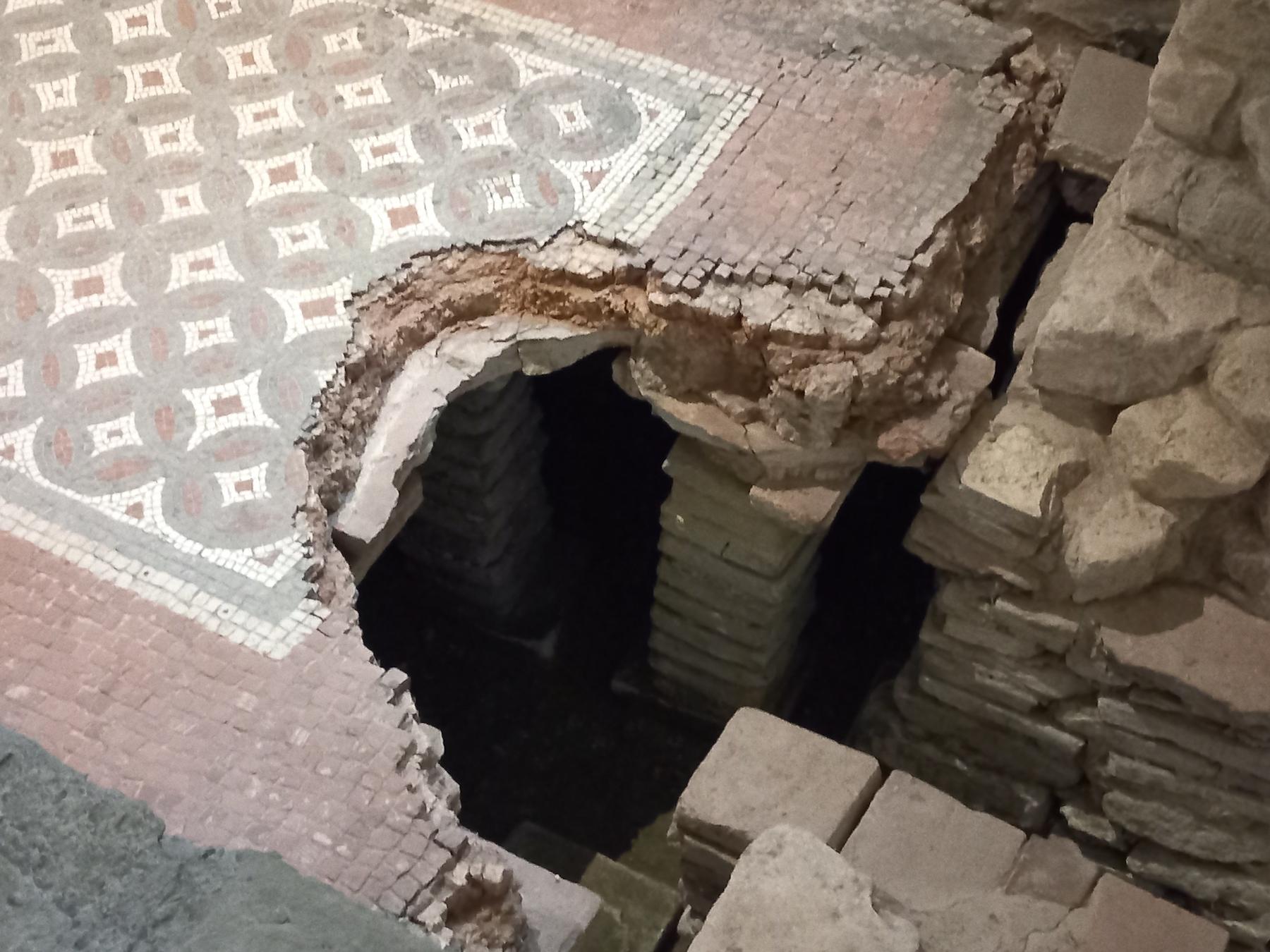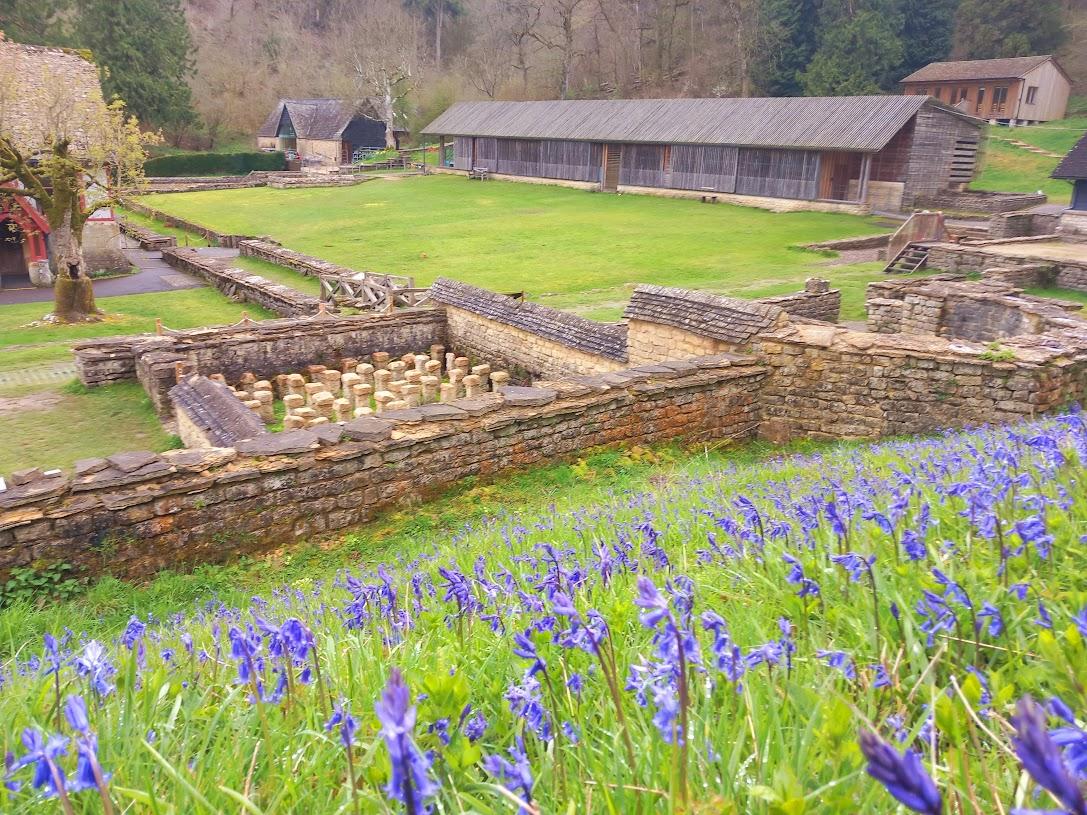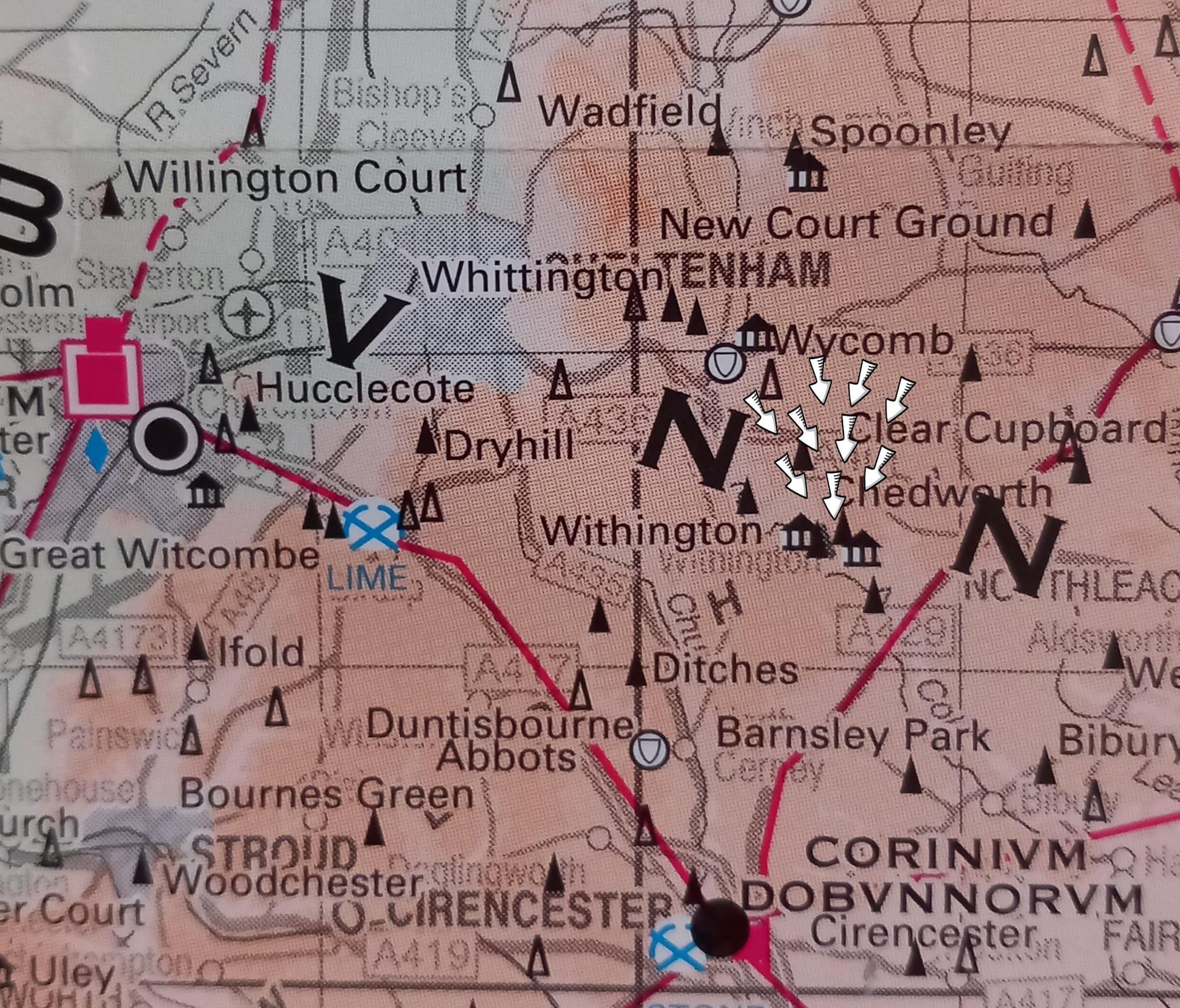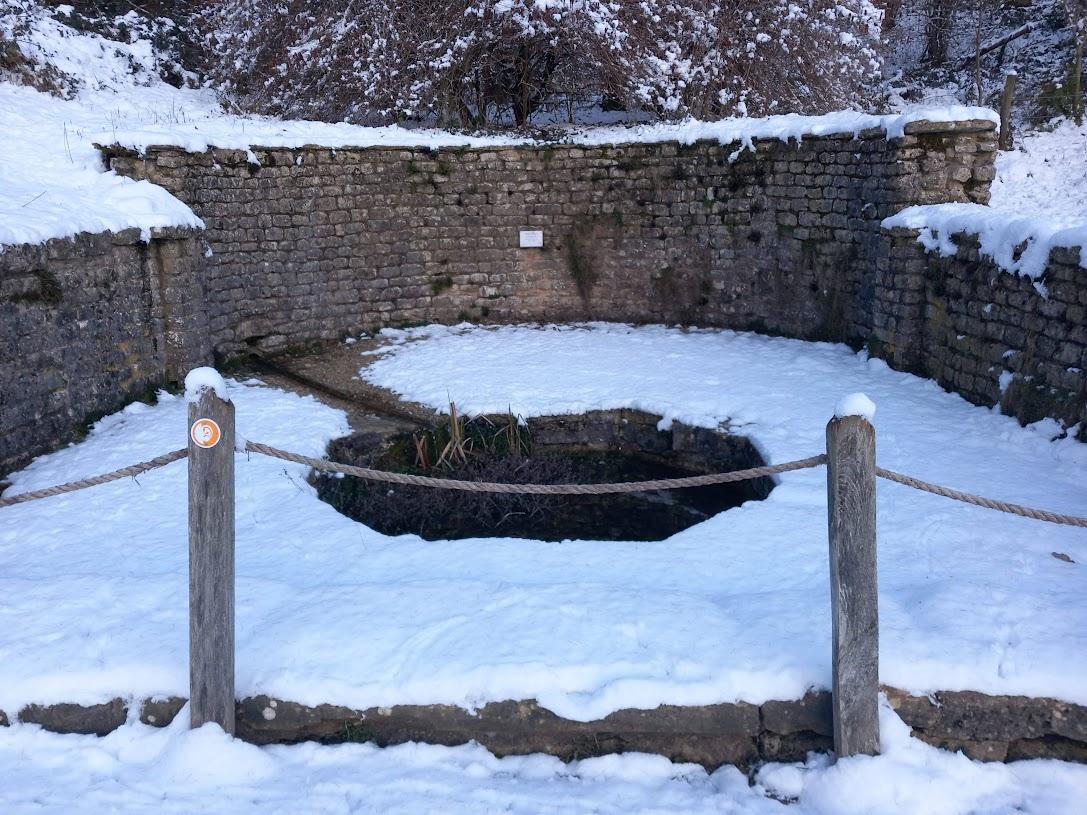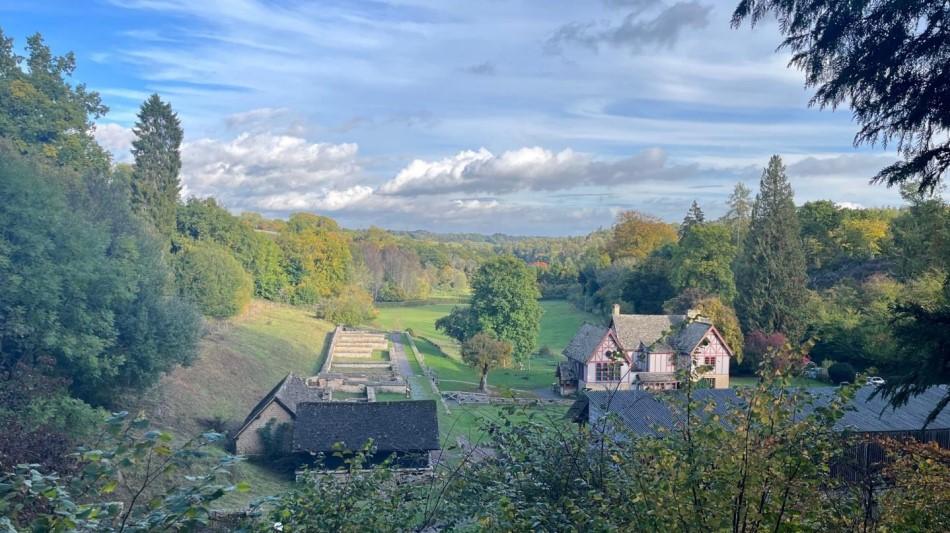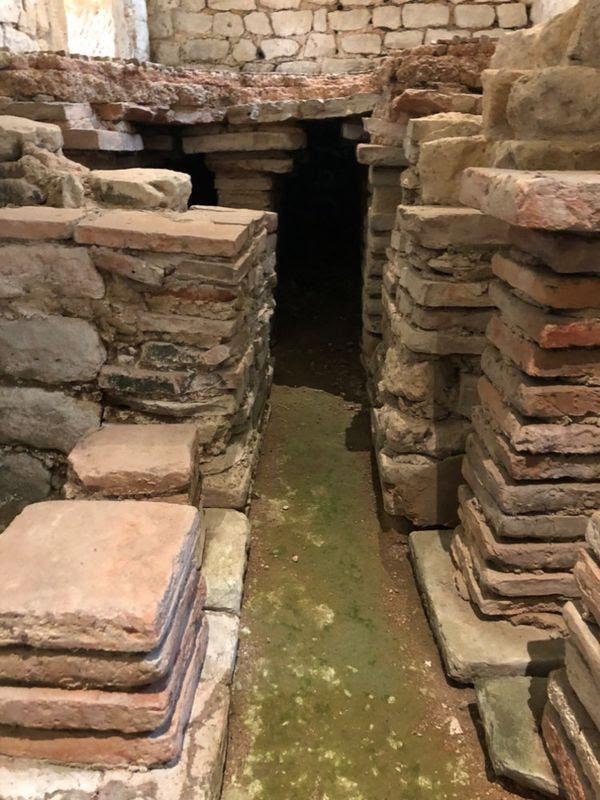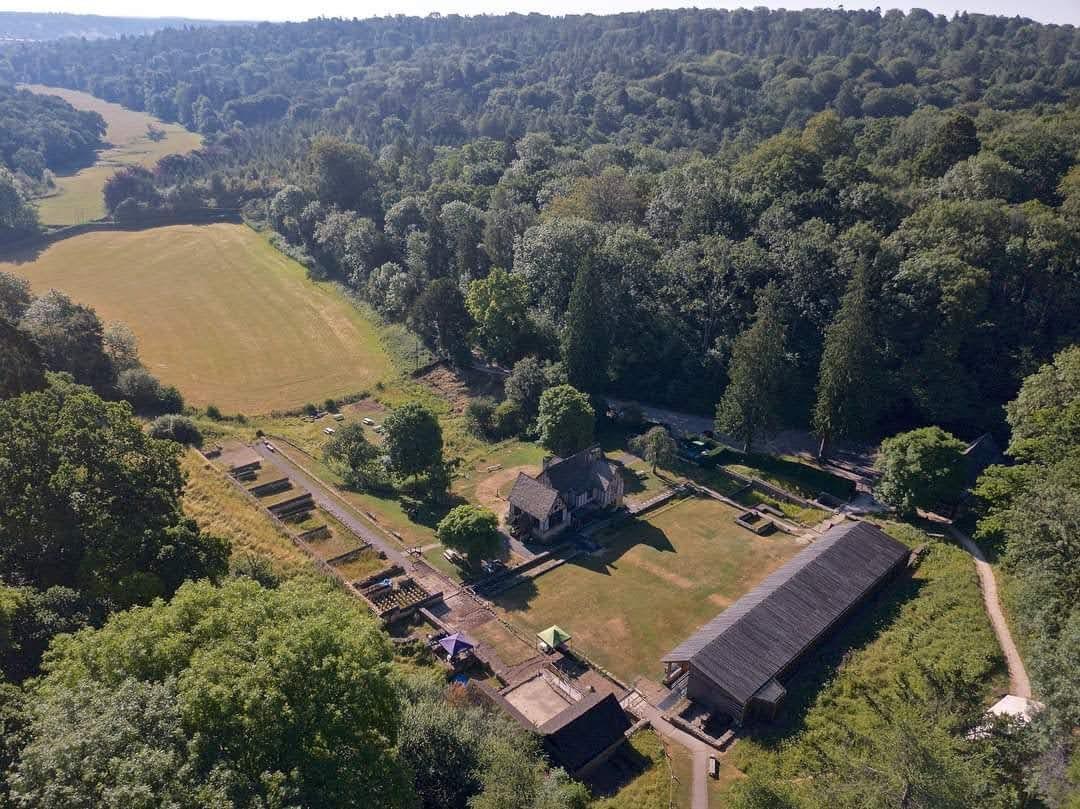
Disclaimer: Any views expressed by individuals and organisations are their own and do not in any way represent the views of The Heritage Portal. If you find any mistakes or historical inaccuracies, please contact the editor.
As many readers will know, I have found my way to the ruins of a National Trust owned Roman Villa in the Cotswolds. In its heyday, Chedworth Roman Villa was one of the grandest villas in Roman Britain with stunning mosaics, two bath houses and several types of hypocaust (underfloor heating systems).
The warm room mosaic in the Chedworth Bath House
Pillars of a hypocaust. Hot air would circulate around these pillars and warm the mosaic floor and room above.
Today, visitors wind their way along narrow country lanes with no mobile signal and, on arrival, many ask the question, 'Why would they build a Villa in the middle of nowhere?'. One of the answers is that, almost two thousand years ago, the site would not have been in the middle of nowhere. Corinium (today's Cirencester), the second largest city in Roman Britain, was nearby and the Fosse Way, a major road, provided good access for residents, visitors and suppliers. Chedworth was also surrounded by several other luxurious villas suggesting a settled community. Where Chedworth fits on the timeline of construction in the area is difficult to say but it is possible that the elite nature of a settled area proved attractive to the future Chedworth owners.
A map showing how well connected the villa was. The black dots are large towns, the red lines are major roads, the small triangles are villas and the white arrows show the location of Chedworth Roman Villa.
Zooming in, another reason for building a villa here was the reliable water source. A natural spring provided water for the bath houses, kitchen and latrine. The importance of this source was celebrated by the construction of a water shrine or nymphaeum and several altars to various Roman gods have been found in the vicinity. The water still feeds and nourishes the site today.
The remains of the water shrine or nymphaeum. Even during a cold snap the water continues to flow.
A third reason many people suggest for the choice of site was the beauty of the area. The Villa is perched at the top of a valley giving residents some spectacular views. Not only would this provide peace and enjoyment for the family but it would have impressed visitors to the Villa.
Stunning scenery
There are several views on how the owners made their money. Some believe they were successful business people while others suggest they held top positions in the government of the time. Another theory is that the Villa was the centre of a large farming estate. With this in mind, the quality of the surrounding land could also have been a reason for Chedworth being built here.
A final reason explaining the location of the Villa worth mentioning is the sheltered position of the site within the valley. Not only would residents be protected from high winds but the microclimate created a gentle breeze that helped to clear the smoke generated from several hypocausts operating at Chedworth.
Hypocaust stacks at Chedworth
While all the factors mentioned above contributed to the decision to build the villa here, in my view, the well connected nature of the area was the most important. Being near a major economic hub with good transport links must have been a very attractive proposition. Once the general area was chosen, it was then the combination of a reliable water source, natural beauty and protection from the elements that led to the specific location choice.
Today, when visitors drive away from Chedworth after a fantastic visit they might just think how wise the original owners were to build a villa here!
Comments will load below. If for any reason none appear click here for some troubleshooting tips. If you would like to post a comment and need instructions click here.

